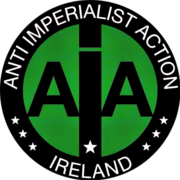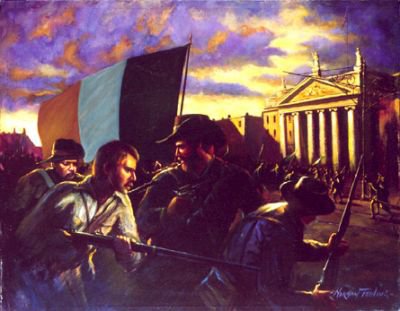‘A Republican ex-POW puts forward a potential Revolutionary strategy to encourage debate- Responses welcome to isrmedia@protonmail.com’
The phrase “Clear, Hold, Build” has its origins in imperialist military counterinsurgency doctrines, particularly associated with U.S. and Western military occupations in places like Iraq and Afghanistan. It is traditionally used to describe the strategy of clearing an area of insurgents, holding it through security “dominance by force” and governance “Leadership and power by elitist predatory regime”, and building institutions and infrastructure to win “hearts and minds.” This analysis is to explore a radical reappropriation of the phrase, removing it from imperialist military jingoistic logic and embedding it in a revolutionary anti-colonial, anti-capitalist struggle.
This version of “Clear, Hold, Build” is adapted to support a broad front resistance strategy rooted in the goals of liberation, self-determination, and the realisation of the Proclaimed Republic free from both external occupation and internal counter-revolutionary forces. The analysis dissects each term in the revised triad, emphasising the importance of clearing not only the oppressor but internal enemies, holding revolutionary ethics, and building an enabling state, framing these not as a linear progression but as interlocking pillars of transformative revolutionary resistance.
A. CLEAR. Removing Structures of Oppression and the Internal Counter-Revolution.
The call to “Clear” begins with the imperative to dismantle the structures of the oppressor, colonial occupying forces, predatory corporate power, and agent provocateur elements aligned with global predatory capital. But this strategic imperative must go further, it must demand the clearing of counter-revolutionaries, a recognition that internal contradictions within oppressed nations or revolutionary movements pose as much of a threat as external enemies.
I. Dual Enemies. External and Internal
External Oppressors, these are the easily identified colonial, imperialist forces, military occupation, partition, economic control, or cultural domination.
Internal Counter-Revolutionaries, these include local elites, reformists, collaborators, “constitutional organisations” that pacify activism, resistance, or factions seeking compromise with oppressive systems under the guise of reformist pragmatism.
II. Clearing the Landscape
Ideologically. Purging reactionary ideas such as ethnonationalism, patriarchal leadership, capitalist aspirations, and sectarianism.
Institutionally. Dismantling legacy governance, punitive judicial systems, and administrative systems designed to mediate imperial control or suppress autonomous self-rule.
Practically. Holding accountable those who administer oppression, whether in the guise of civil servants, judicial collaborators, or community “gatekeepers” who prioritise “stability” over justice.
The revolutionary resistance must not only fight to remove the coloniser but also to clear its lingering ideological and institutional residues from within the struggle itself.
B. HOLD. Upholding Revolutionary Ethics and Processes
Once the initial phase of clearing is underway, resistance must transition into a stage of “Hold”, not in the militaristic sense of occupying territory, but in holding fast to revolutionary principles and creating durable, participatory frameworks of debate, criticism, and people’s governance.
I. Revolutionary Discipline and Internal Critique
High Standards. The resistance must not replicate the authoritarianism or vanguardist elitism of past revolutions. It must be accountable to the people it claims to serve.
Internal Critique. Encouraging open, honest, and public self-criticism and collective reflection, recognising errors, re-centring marginalised voices, and challenging power accumulation within the movement.
Avoiding Cults of Personality. Holding leadership accountable through people’s structures, with rotating leadership and horizontal power.
II. Open, Clear, and Concise Debate
No dogmatism. Theory and ideology must serve the people, not the reverse. Revolutionary theory must evolve with material conditions and feedback from the base.
Accessible communication. Political education must be grounded in clear language and shared experiences, avoiding academic elitism or “opaque” / “exclusionary” jargon.
Unified diversity. Embracing debate without fragmentation. Encouraging ideological diversity within shared foundational goals.
By holding revolutionary space ethically and “democratically,” resistance movements become credible, resilient, and attractive to the masses, avoiding degeneration into authoritarianism or reformist/elitist regimes.
C. BUILD. Enabling the Proclaimed Republic and New People’s Institutions of Liberation
The Build. The resistance must transcend reactive struggle and begin constructive statecraft. This stage envisions enabling the Proclaimed Republic, a term suggesting not just administrative independence but a revolutionary reordering of power.
I. Enabling, Facilitating, Not Controlling
Revolutionary Resistance as the Facilitator. The new structures must facilitate community autonomy, cooperative economies, and participatory egalitarian governance, not replicate hierarchical, extractive and exploitative models.
Dual Power Structures. Encourage people’s local councils, people’s regional assemblies, worker cooperatives, and people’s tribunals that prefigure and embody the Proclaimed Republic before its formal institutionalisation.
II. Education, Culture, and Material Well-being
Cultural Reclamation. Build cultural institutions rooted in indigenous, anti-colonial, anti-predatory capitalist and popular knowledge traditions.
Social Infrastructure. Healthcare, education, housing, not as top-down for profit and control programs but as collectively constructed rights, built through solidarity economies.
Economy of Liberation. Replace predatory capitalist market logic with needs-based planning, cooperative collective ownership, and mutual aid structures.
The act of building is itself revolutionary, a living demonstration that another world is not only possible, but already emerging by revolutionary means.
Beyond “Clear, Hold, Build.”
Towards Revolutionary Creation.
The text explicitly notes that these three terms are starting blocks, not the whole strategy. This is a crucial insight, resistance must not be constrained by frameworks, even when reappropriated.
Supplementary Strategy.
Educate, Organise, Activise, to deepen political consciousness.
Herald, Defend, Expand, to live out revolutionary values now, while defending against rollback.
Care, Heal, Sustain, to reject burnout culture and place social reproduction and community care at the heart of struggle.
“Clear, Hold, Build” provides an entry point, but must be part of a broader debate, revolutionary movements must constantly reassess and regenerate their strategies to meet the evolving terrain of struggle, remembering that no plan survives contact with the enemy.
A Rewarding Resistance
The statement ends with the assertion that this is “the foundation of the rewarding resistance to occupation, partition and oppression.” The word “rewarding” is essential—it reminds us that revolutionary struggle is not merely a burden or sacrifice, but a joyful act of collective creation, healing, and liberation.
To succeed, a broad front strategy must be intersectional, internally democratic, and grounded in lived experience. It must seek to decolonise not just the state, but societal imagination. And it must start with a commitment to integrity, justice, and collective transformation, through clearing, holding, and building.

